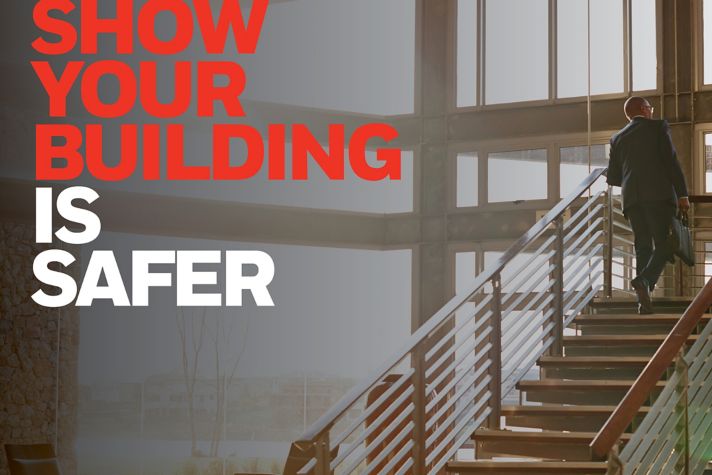-
 Location
Location-
Asia Pacific
-
Europe
-
Middle East
-
North America
- |
- Contact
- |
-
Currency:Localize your Content
You can set your preferred currency for this account from the Home page.
Choose a Currency
Currency- CHOOSE YOUR CURRENCY
Update Currency
Changing Currency will cause your current cart to be deleted. Click OK to proceed.
To Keep your current cart, click CLOSE and then save your cart before changing currency.
-
Select Account
Switching accounts will update the product catalog available to you. When switching accounts, your current cart will not move to the new account you select. Your current cart will be available if you log back into this account again.
Account# Account Name City Zip/Post Code CANCELPROCEEDMy Account
-
News & Events
News & Events
-
News
Discover stories about the innovations and trends from Honeywell Building Technologies that help transform the way that buildings work.
-
Events
These HBT events bring the latest in building technology and trends to users around the globe. Trade shows, customer events, speaking engagements, HUG, Technology Day and webinars.
-
Press & Media
Read our press releases section and learn more about Honeywell Building Technologies.
-
News
-
 Location
Location-
Asia Pacific
-
Europe
-
Middle East
-
North America
- |
- Contact
- |
You are browsing the product catalog for
- News
- Building Airflow Isn't a One Way Street
Building Airflow Isn't a One Way Street
Air flow is essential in the building environment. It can impact the structural integrity of a building, energy efficiency and environmental health. The latter has become increasingly relevant topic as businesses look to come back to buildings and the industry adjusts to a new normal. Occupants will want healthier environments for the buildings they use for work, school, entertainment and travel.
A modern healthy building improves the confidence and productivity of the people who use it while also considering energy efficiency. The backbone of indoor air quality – ventilation, relative humidity, filtration and pressurization – is also the starting point for a healthier building. Every building has these functions, but they may not be optimized for building health.
Out with the Old Air
It’s one thing when you enter your house and it feels “stuffy” or “stale” and you open a window or turn on a fan. That’s not a possibility in a high-rise office or a hospital. Buildings with poor ventilation aren’t just uncomfortable, they may even be unhealthy. Buildings without well-controlled and monitored air flow may inadvertently contribute to the spread of bacteria, pollen, pollutants, pathogens and other contaminants.
More than just moving air around within a space, air quality in any building depends on the amount of fresh air coming in and the ability to push old or “dirty” air out. The process of applying intentional and controlled ventilation to buildings is long established and is guided by ASHRAE 62.1 and other regional standards. Often essential to these standards is the rate of exchange: how many times per hour the full volume of air in a space is replaced through mechanical ventilation.
Rate of Exchange
Measuring the rate of air exchange happens when a building’s HVAC system is commissioned and is often rarely done again. That can make it difficult to prove that the exchanges are occurring at the desired rate. Air flow measuring stations installed on HVAC equipment within a building measure and track air flow rates on an ongoing basis with the building management system. This allows building owners to easily change the rate of exchange if guidelines change, without service interruption or the expense of hiring a contractor to take the measurements. Proper air exchange can dispel odors, chemicals and CO2, while balancing energy use and reducing disease transmission.
Meet the Latest Guidelines
Monitoring and adjusting air flow within a building can make occupants more comfortable, and it can also play a role in reducing airborne viruses or bacteria. A study conducted by Yale University, found that humidity levels kept in the 40-60% range can significantly reduce the ability of a virus to spread.
ASHRAE’s updated guidance for inhibiting the spread of viruses includes:
- Increase outdoor air ventilation (use caution in highly polluted areas)
- Disable demand-controlled ventilation (DCV)
- Open minimum outdoor air dampers, as high as 100%, thus eliminating recirculation
- Consider portable room air cleaners with HEPA filters
- Consider UVGI (ultraviolet germicidal irradiation), protecting occupants from radiation, particularly in high-risk spaces such as waiting rooms, prisons and shelters
- Consider altering equipment operating schedules to flush buildings with fresh air for two hours before and after occupancy
Air flow shouldn’t just be a consideration when a building is commissioned. It should be actively addressed based on season, occupancy, updated building guidelines and even factors like minimizing potential virus spread.
In many developed countries, people spend more than 90% of their days indoors so the indoor air quality in the buildings we work, live and play in needs to be optimized for health. Occupants will demand it. We can help building owners keep up with it. Learn more about Honeywell’s Healthy Building solutions.
Contributed by Peter Fehl, President, Building Management Systems, Honeywell
Copyright © 2025 Honeywell International Inc.
Maximum File Size
Maximum Files Exceeded
You cannot access this page as this product is not available in your country.
Maximum File Size
Maximum Files Exceeded
Due to inactivity you will be logged out in 000 seconds.



